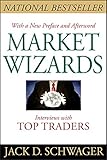Top 14 Books to Learn Technical Analysis
In today’s world everyone wants to earn money as soon as possible. There are many ways to earn money. Stock market is also one of them. But before investing in stock market, one must know or acquire at least basic knowledge about stock market. To gain knowledge you have to read books related to stock market. There is a wide range of books available to learn technical analysis of the stock market, covering topics such as chart patterns, crowd psychology and even trading systems. In this article, we will look at 14 books on technical analysis to help beginners, traders and investors better understand the subject and use this knowledge in their trading.
 |
| KNOWLEDGECREDO.COM |
1.Getting Started in Technical Analysis
:max_bytes(150000):strip_icc():format(webp)/51UFSLIy0xL._SX351_BO1204203200_-c9f341ca9b734094b3a60cfb0651ef19.jpg) |
This book is an excellent starting point for beginners and traders that covers every major topic in technical analysis. In addition to covering chart patterns and technical indicators, the book takes a look at how to choose entry and exit points, developing trading systems, and developing a plan for successful trading. These are all key elements to becoming a successful trader.
2.Technical Analysis Explained by Martin Pring
This book is known as the “Bible of Technical Analysis,” this momentous work seeks to make technical analysis an essential and inseparable part of an average investor’s investment strategy.
The author has given very deep knowledge of technical analysis as a practical and valuable tool for predicting price movements and how to invest with confidence in today’s increasingly complex markets. A great deal of focus is on developing and implementing successful strategies with the help of advanced investment tools and techniques and how investor psychology shapes the markets.
It is a reasonably detailed work that encompasses almost every aspect of investing in today’s markets while retaining its focus on technical analysis as an efficient investment approach.
Easy-to-read technical analysis book for lay readers and professionals to acquire an in-depth understanding of the functioning and structure of modern markets, the utility of cutting-edge investment tools and techniques, and the relevance of the technical analysis.
3.Technical Analysis of the Financial Markets by John Murphy
This book is good for introduction to technical analysis that provides a high level of detail and actionable understanding. As a former technical analyst for CNBC with over 40 years of experience in the market, Mr. Murphy has become a leading voice for technical analysis and is highly skilled at conveying complex topics in an easy to understand manner. Beginers and traders are advised to check out this book before diving into more complex topics.
4.How to Make Money in Stocks
This book is considered a classic work on technical analysis and was written by the founder of Investor’s Business Daily, one of the most popular investment publications in the world. O’Neil was a strong advocate for technical analysis, having studied over 100 years of stock price movements in researching the book. In the book, he presents a wide range of technical strategies and tips for minimizing risk and finding entry and exit points.
5.Japanese Candlestick Charting Techniques
by Steve Nison |
6.Encyclopedia of Chart Patterns by Thomas Bulkowski
This book is truly an encyclopedia that contains an exhaustive list of chart patterns a statistical overview of how they have performed in predicting future price movements. Mr. Bulkowski is a well-known chartist and technical analyst and his statistical analysis set the book apart from others that simply show chart patterns and how to spot them. The updated version of the book includes a section on event trading and patterns that occur with news releases.
7.Technical Analysis Using Multiple Timeframes
This book has a wide appeal for technical traders because it can be helpful to traders regardless of the strategy that they use. The book highlights the value of applying technical analysis across multiple timeframes to identify trades with the highest probability of success. It also goes well beyond what its title implies and covers subjects including short selling, stop-loss order placement, price target identification, and related topics.
8.Technical Analysis from A to Z
It is an excellent read for beginners to learn the basics of technical analysis that presents the concepts and standard terminology employed in an easy-to-understand format in the first part. Over 100 technical indicators and a wide range of commonly used chart patterns are explained lucidly in the latter part of this work. What makes this work of such great utility is the systematic approach adopted by the author in explaining each of the indicators and illustrating them with relevant practical examples in this top technical analysis book.
- Traders interested in learning basic technical analysis concepts without much effort.
- Information on technical indicators and chart patterns can help a beginner get going.
- A must-read for those new to technical analysis
9. Technical Analysis
 |
| by Charles D. Kirkpatrick II (Author), Julie R. Dahlquist (Author) |
An extensive manual on the theory and application of technical analysis, this work is the official companion to the Chartered Market Technician (CMT) program. It discusses an entire spectrum of concepts related to technical analysis, including tested sentiment, momentum indicators, the flow of funds, seasonal effects, risk mitigation strategies, and testing systems, supported with valuable illustrations and practical examples. This work also covers advanced concepts in pattern recognition, market analysis, and experimental indicators, including Kagi, Renko, Ichimoku, and Clouds, along with novel portfolio selection techniques, among other concepts, to keep the readers updated with recent advances in the field. What brings added value to the work is the rare combination of academic and practical approaches to the study of technical analysis, making it an invaluable resource for both students and professional traders.
- As an official companion to the Chartered Market Technician (CMT) program, this work is an excellent guide for CMT and Series 86 exam exemption students.
- The single most significant advantage of this book is that it systematically covers the expansive field of technical analysis, making it accessible to even an average reader.
- Practical illustrations and updated information at every step add to the utility of this work for a trader.
- A complete knowledge resource of technical analysis in the true sense of the word.
10.Japanese Candlestick Charting Techniques
 |
| by Steve Nison (Author) |
Widely acclaimed as a work in its class, which introduced Japanese candlestick charting techniques to the Western world, it is an excellent guide on the background and basic principles underlying this approach. Today, candlestick charting has become an almost integral part of any study on technical analysis and has been applied with great success by traders worldwide. The author has also included information on how this innovative charting technique can be fused with various technical tools and employed as a versatile analytical tool for market analysis. This approach can be successfully adopted for analyzing futures markets, equities, or speculation and hedging, showcasing the universal applicability of its principles. This work is recommended for every technical trader, supported by hundreds of examples.
- Excellent introductory work to candlestick charts for beginners as well as professionals.
- It brings out the relevance, range, and depth of technical analysis applied to the day’s complex markets.
- This technical analysis book shows how to combine this technique with any other technical tool to analyze almost any market, be it equities, futures for hedging, speculation, and trade with confidence.
- An essential reading companion for anyone interested in learning the art and science of technical analysis with candlestick charts.
11. Technical Analysis for Dummies
 |
| by Barbara Rockefeller |
- A simple yet masterful introductory work on technical analysis which covers a wide range of concepts that hold practical value for an average investor or trader.
- This work covers everything from drawing a trendline to studying market conditions and utilizing actual data to make reliable trading decisions.
- To top it all, readers can quickly learn how to choose the analytical tools of their choice and trade with confidence.
- A recommended read for novice traders.
12. Elliott Wave Principle
 |
| by A.J. Frost, Robert R. Prechter Jr., Charles J. Collins |
Excellent analytical work on the Elliott Wave principle proposes that one can study stock market movements with the help of patterns that come together to represent more significant wave-like movements. This work describes how an understanding of Elliott wave theory can help unravel the mysteries of seemingly random stock market movements and can be used to forecast future market trends accurately. The authors assert the underlying scientific principle behind this system can be found at work in nature, art, and mathematics, as well as in the human body, and go on to analyze historical ups and downs with the help of this system. Almost academic work with practical applications in finance and studying stock market behavior.
- Introduces Elliott wave theory to study stock market movements and make intelligent moves in keeping with emerging patterns.
- On a realistic level, technical analysts have employed this method along with other technical tools, and it would be best not to rely on it in isolation while making investment choices.
- Not one of the most accessible technical analysis books for even a trader but worth the time spent if one wishes to learn the inherent patterns underlying stock market behavior.
13. Technical Analysis of Stock Trends
A masterpiece on technical analysis is nothing less than an in-depth exposition of chart pattern analysis and a detailed discussion on the evolution of the Dow theory and how one can replace it with a viable alternative. Initially published in 1948, this work continues to be an essential resource for chartists, focusing on vertical bar charts and stressing their utility for market analysis. In addition, the latest edition of the work includes a great deal of updated information on the subject, including an expanded version of pragmatic portfolio theory and the Leverage Space Portfolio Model, among other concepts. In short, a true classic for technical analysts and chartists.
- Particular focus on vertical bar charts and how a chartist can utilize them to their advantage in everyday trading.
- It contains extensive information on chart pattern analysis, making it an excellent reference work for novice and expert chartists.
- Updated with the latest theories, tools, and techniques to bring added relevance to the work in today’s markets.
14. Market Wizards
 |
| by Jack D. Schwager |
This technical analysis book is a fascinating collection of top traders’ interviews that offer invaluable insights into some of the best minds in the industry. An exciting read for novice and professional traders to learn the nuances of the art of trading and enhance their risk management skills from fantastic success stories of traders in a league of their own. This work includes the interviews of Bruce Kovner, Marty Schwartz, Ed Seykota, Tom Baldwin, and other super traders. In addition, the author has put a great deal of effort into developing a set of guiding principles for traders based on the first-hand experiences of these traders.
- This technical analysis book is one of the best informal works on trading with a rare appeal.
- For the curious at heart, the secrets of the super traders reveal in an easy-to-follow manner, which can help even an average trader learn how to trade with a difference.
- An attractive, informative, and inspiring read for anyone passionate about trading
BOTTOM LINE
There have been many books written on technical analysis, but some of them have become timeless classics that are invaluable to traders. Those new to technical analysis may want to check out these books to fine-tune their strategies and maximize their odds of success.

:max_bytes(150000):strip_icc():format(webp)/51CsUM9EML._SX332_BO1204203200_-988acbf022ed46cc887b4aac33a566cf.jpg)
:max_bytes(150000):strip_icc():format(webp)/51bI1G-MAQL._SX376_BO1204203200_-a633a89840b14b48977a52045bb0d0e2.jpg)
:max_bytes(150000):strip_icc():format(webp)/51Jxf0fXuSL._SX330_BO1204203200_-ca9a8a5ad50949bda0af6935e42f35ca.jpg)
:max_bytes(150000):strip_icc():format(webp)/41AgCspEd5L._SX361_BO1204203200_-41d6454b38014cb584b1ca917c48511e.jpg)
:max_bytes(150000):strip_icc():format(webp)/51JsClHKN1L._SX351_BO1204203200_-46c67d3da65b4c54aebaa602a89e5ff4.jpg)
:max_bytes(150000):strip_icc():format(webp)/51vxx2Lg5JL._SX374_BO1204203200_-5ae5d20f043543fb934d69d970dd1234.jpg)

